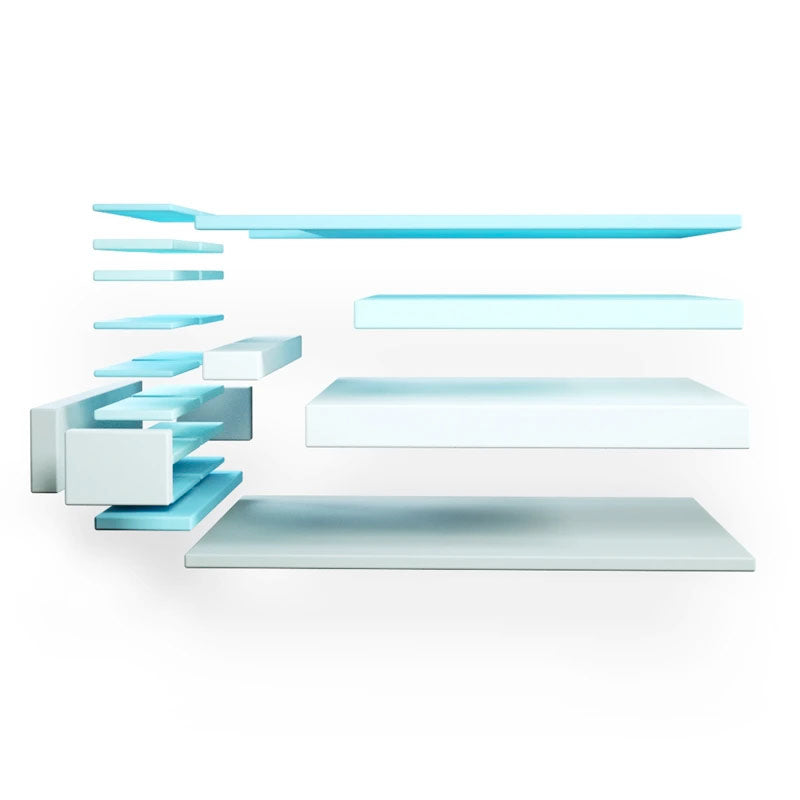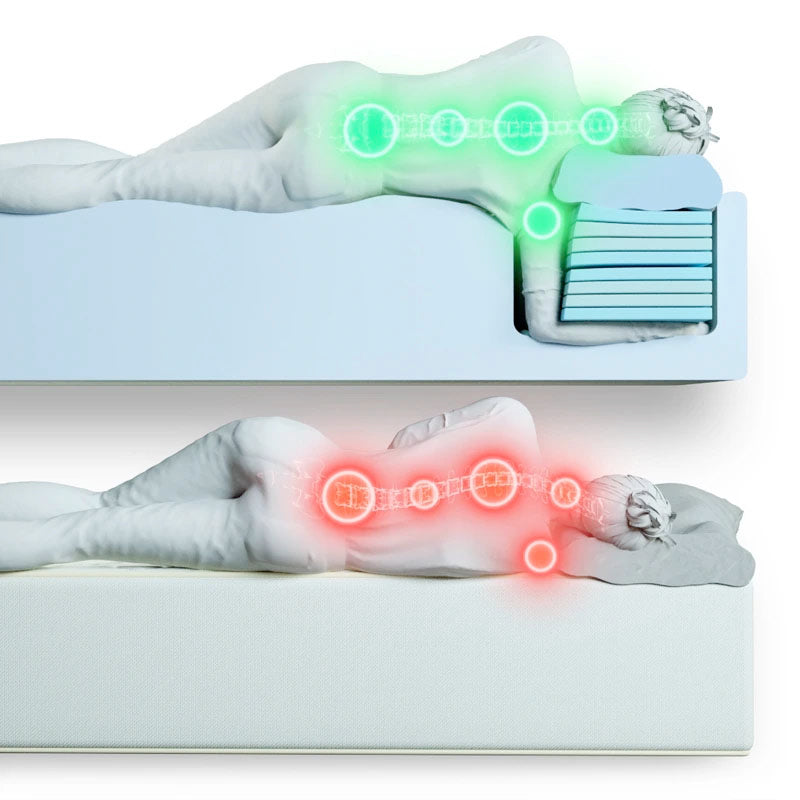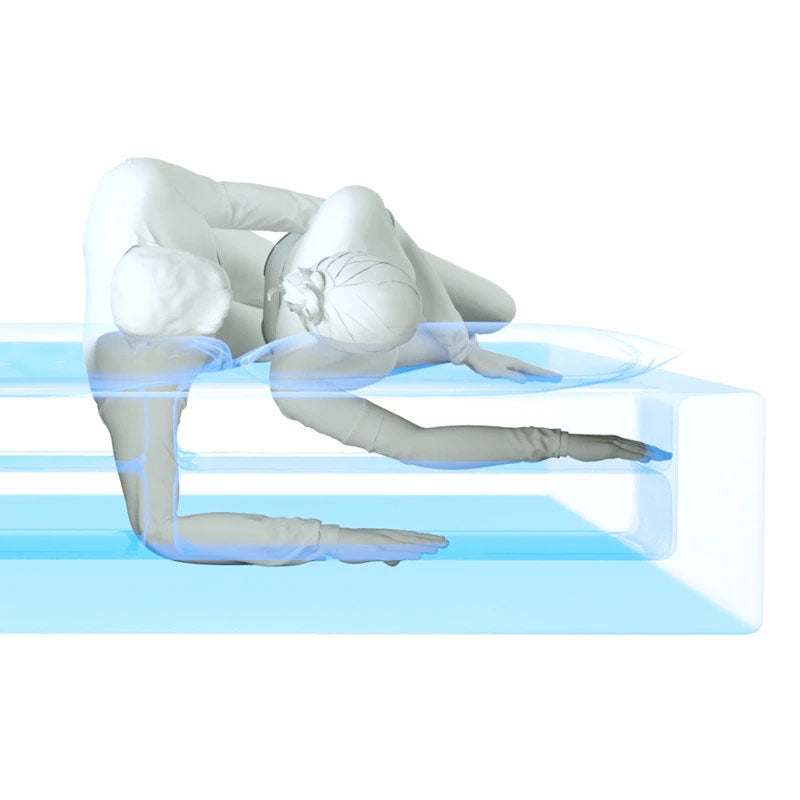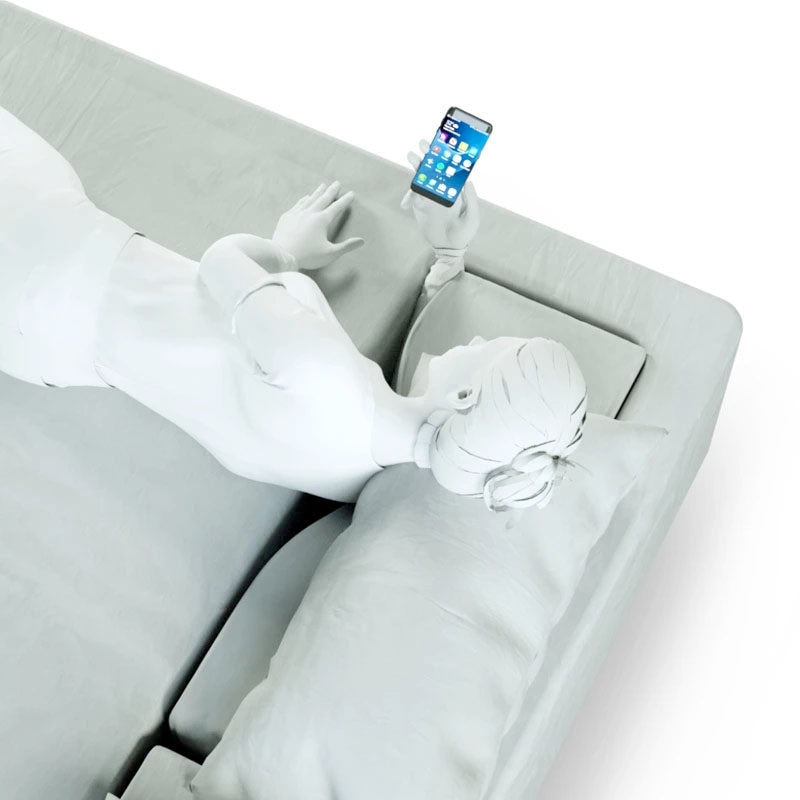Memory foam, also known as viscoelastic foam, is a polyurethane product. In recent years, memory foam mattresses have become more popular with consumers than any other type of mattress. This sudden rise in popularity is due to memory foam’s ability to mold to and support sleepers’ bodies, often relieving pain in the shoulders, hips, and back.
Wise consumers have begun asking exactly what this polyurethane foam is. What is it made of? Are its components harmful?
This is the ultimate guide to everything you need to know about memory foam and how SONU can help if you’re looking for the most comfortable mattress yet.
What Is Memory Foam?
Unlike other polyurethane foams, memory foam uses additional chemicals to create its consistency. This consistency makes the foam viscous and elastic. What do you get when you combine those two adjectives?
That’s right — viscoelastic.
NASA first used the foam for shock absorption during liftoff and to cushion airplane seats. It was later used as protective padding in football helmets before being used in hospitals to protect patients from bedsores. Since that time, memory foam has evolved along with its uses.
What’s in Memory Foam?
In addition to polyurethane, memory foam mattresses can contain formaldehyde, petrochemicals, boric acid, and polyvinyl chloride. However, be aware that most of these chemicals were used when memory foam mattresses were first created.
Chemicals that used to be commonly found in memory foam products include the following:
- Chlorofluorocarbons
- Methylene chloride
- Methylene dianiline
- Methlybenzene
The Consumer Product Safety Commission (CPSC) requires that all mattresses are flameproof. Manufacturers make them flameproof by applying chemical flame retardants.
Some flame retardants have been found to affect people’s health negatively. However, manufacturers must label any mattresses that could endanger human health.
Newer memory foam mattresses contain fewer chemicals, and they are much safer for consumers. A mattress that has Kevlar or rayon applied to it is considered nontoxic.
How Is Memory Foam Tested?
Memory foam goes through a rigorous testing process before it is allowed on the market for purchase. The mattresses' viscosity, elasticity, and durability are all put to the test. The material is graded on its weight, Indentation Load Deflection (ILD), resilience, and tensile strength.
Weight. Memory foam density is measured in pounds per foot. The more chemicals used to create the foam, the higher the density. Therefore, the goal is to find a product with lower density because it uses fewer chemicals to create. The average density for most memory foam mattresses is between 4lbs and 5lbs.
ILD Rating. This rating measures the viscosity of memory foam, aka, how soft or hard it is and how much pressure it can take. A lower ILD rating means that the foam delivers higher pressure relief.
Resilience. This just measures how bouncy the foam is and how quickly it will spring back to its original shape. Higher resilience equals a more supportive and durable foam.
Tensile Strength. This measurement puts memory foam’s elasticity to the test. It isn’t given as much importance as the other measurements.
Is Toxic Memory Foam Still Sold?
If you purchase a memory foam mattress from the United States, it won’t contain polybrominated diphenyl ether (PBDE) or formaldehyde. American manufacturers have gone to great lengths to reduce the amount of chemicals used in their mattresses.
What’s Off-Gassing?
If you’ve purchased a bed in a box, you’ve probably experienced off-gassing. Off-gassing is the emission of certain compounds used to create memory foam mattresses when the mattress packaging is opened.
Memory foam customers have noticed that the mattresses have an unusual smell when unwrapped or unboxed. This smell is temporary, but it can last for a few weeks. It’s usually caused by volatile organic compounds (VOCs).
What are VOCs? The Environmental Protection Agency (EPA) defines VOCs as “compounds that have a high vapor pressure and low water solubility.” VOCs are human-made, and they are common in refrigerants, paint thinners, dry-cleaning solvents, and, surprisingly, pharmaceuticals.
Some other products that contain VOCs are:
- Copiers and printers
- Cleaning products
- Building materials
- Furnishings
- Adhesives
- Permanent markers
- Carbonless copy paper
- Photographic solutions
- Carpet and vinyl flooring
- Air fresheners
- Smoke
As you can see, VOCs are in many products that we are exposed to every day. These compounds are emitted as gasses, and they include an array of chemicals.
Are VOCs Safe?
VOCs are safe at low levels. However, some people are sensitive or allergic to them.
Exposure to high levels of VOCs is extremely unsafe and can cause the following issues:
- Irritation of the eyes, nose, and throat
- Headaches
- Nausea
- Asthma
- Vertigo
Frequent exposure to high levels of VOCs can cause various cancers, kidney or liver damage, and damage to your central nervous system.
If you are concerned about VOC exposure, there is an alternative: Biogreen. Biogreen memory foam mattresses are made with fewer harsh chemicals, and they contain below-average amounts of VOCs. In fact, the amount of VOCs allowed in Biogreen mattresses is 13 times below average.
Are VOCs Regulated?
Yes, but only for outdoor air. The EPA regulates some VOCs via the Clean Air Act (CAA).
The Clean Air Act regulates air emissions in order to help protect the health and welfare of the public by reducing potentially hazardous air pollutants.
Some VOCs produce ozone, a smog ingredient that negatively affects the environment. If a product like memory foam is not photochemically reactive (aka does not cause ozone), it will be marked as “low VOC” or “no VOC.”
Even though the EPA can’t regulate the VOCs in mattresses, other certified organizations, like CertiPUR-US, have taken on the task. Other certifiers are OEKO-TEX and GREENGUARD Gold.
Qualities To Look For in a Memory Foam Mattress
You might be wondering, what qualifies as a good memory foam mattress? What qualities should I be looking for when buying one?
Memory foam’s number one job is to intimately fit the contours of your body to provide you maximum pressure relief and prevention of pressure points. How much support you need might depend on your height, weight, or pain issues like back pain or shoulder pain.
If you are experiencing chronic physical pain, consider how firm you need the mattress to be. For example, it’s recommended that people with chronic shoulder or hip pain sleep on a medium-firm mattress.
When determining how much you want to sink into your mattress, you should also consider firmness. Memory foam is known for feeling like it has swallowed your body whole. You should get a firmer mattress if you don’t care for that feeling.
Motion control is a concern for many co-sleepers, and luckily, memory foam is a good option for controlling it. Memory foam is an excellent choice if you are looking for a bed that doesn’t move every time your partner, pets, or children move or get out of bed. When a particular memory foam mattress catches your eye, look for reviews about its motion control.
You should also consider how long the warranty period is for memory foam mattresses. Typical warranties are five or 10 years.
Also, see if there is a trial period. Many people have buyer’s remorse because they bought mattresses that didn’t come with a trial period. You won’t have that problem with SONU — they offer a 100-night trial with each mattress you purchase.
Last but not least, consider the price point that you find memory foam mattresses under. Cheap memory foam mattress manufacturers may use higher quantities of toxic chemicals to save money on the manufacturing process. This is not to say that you can’t find a nontoxic, budget-friendly mattress. Research which memory foam mattresses are the least toxic before you shop; if you’re in a mattress store, look for toxicity labels on the mattresses.
Not all memory foam mattresses are made with high standards. You don’t have to worry about that with SONU. All of SONU’s mattresses are certified by CertiPUR-US. SONU’s combination foam mattresses are created according to the highest standards, avoiding ozone-depleting chemicals.
What’s the Best Alternative to Memory Foam?
Memory foam is known for its heat retention, which some sleepers do not prefer. When the foam contours to your body, it absorbs the heat from it. Popular alternatives to memory foam include innerspring, gel, latex, and hybrid mattresses.
Innerspring mattresses are a classic, but they are not as supportive as some alternatives. The mattresses consist of an inner coil system that is encased in another fabric with a pillow top.
Hybrid mattresses combine two types of mattresses in one. The most common is a memory foam mattress with an innerspring support system.
Gel mattresses are a popular alternative to memory foam because they do not retain heat. Typically, gel is infused inside a memory foam mattress, which gives it a cooler feeling for the sleeper.
Natural latex is made from the sap of rubber trees. Latex offers pressure relief just like memory foam, but it bounces back into shape much faster. It also does not retain as much heat as memory foam does.
A new contender on the market is the serene foam mattress.
What Is Serene Foam?
Serene foam is a material that contains billions of air capsules that allow air to flow freely. It gives sleepers a cooling experience.
SONU Sleep offers a unique new mattress that contains memory foam layers to deliver a cool, pressure-relieving mattress unlike anything else you’ll find on the market today. The combination of these materials topped off with a sumptuous comfort layer of serene foam provides you with a relaxing sleep experience that you won’t get from regular mattresses.
This top layer offers sink-in support for all sleeping positions, meaning even side sleepers can rest easy. What’s more, the SONU mattress includes a Comfort Channel that allows you to fully immerse your arm and shoulder into the bed while sleeping on your side, thus preventing pain and pressure in these areas.
Conclusion
Memory foam has been around since the 1960s. Customers love it because of its body contouring abilities and pressure-relieving support. The foam is known for being durable and long-lasting, which is why so many people purchase memory foam mattresses today.
If you’re looking for a foam experience that does not retain heat and still provides you the support of your average memory foam mattress, look no further than SONU’s own serene foam negative space mattress.
Get all the body contouring of memory foam with the flexibility and heat-resistance of the Serene foam. And to top it off, it comes with a patented Comfort Channel that you can allow your arms and shoulders to sink into while you sleep!
SONU’s goal is to provide customers with a high quality, unforgettable sleep experience that they can’t get anywhere else. If you’re ready for true comfort, try SONU.
Sources:
Summary of the Clean Air Act | US EPA
All Mattress Types Explained - What Are The Pros & Cons Of Each? | Sleep Advisor
Volatile Organic Compounds (VOCs) in Your Home | EH: Minnesota Department of Health
Does EPA regulate volatile organic compounds (VOCs) in household products? | US EPA
What are volatile organic compounds (VOCs)? | US EPA
Information, Comparisons and Buying Tips | MemoryFoamMattress.org
Forty-Year-Old Foam Springs Back With New Benefits | NASA Spinoff
Final Rule - Standard for the Flammability (Open Flame) of Mattress Sets | CPSC






















